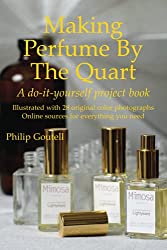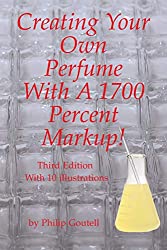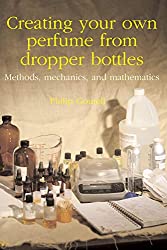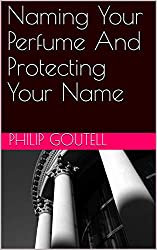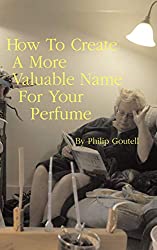Test – Question everything – guard your money!
Even a simple, imperfect test can save you a lot of money and embarrassment – or clear the way for a major success!
Marketers test in order to evaluate opportunities without spending much money. When daily newspapers were the test vehicle for mail order companies, many offered advertisers a split run. A split run – or a "perfect A/B split" as it was known – involved printing two versions of an ad on a rotary press where plates for both pages could be mounted. When the press was run, every other paper off the press would carry the "B" version of the ad. When the newspapers were stacked and bundled for distribution, one paper would carry the "A" version of the ad and the next in the stack, the "B" version. Regardless of how distribution of the newspapers was carried out, regardless of the demographics of any particular neighborhood, half the readers would see the "A" version and the other half would see the "B" version.
I recall one particular split run in which the marketer had an ad that had been a small success but was willing to test it against a new ad in a split run. The new ad produced dramatically better results and launched a multi-million dollar business.
General advertisers have also used newspapers for tests. An ad for a new product would be run with a store coupon in a small city newspaper. If enough coupons were redeemed, testing would be expanded until national distribution was achieved.
Because daily newspapers are read and tossed, their special value is the quick answers they produce. In a few days the marketer can judge whether the product will be a success. When people read an ad in a newspaper, either they respond or they don't. Very few people redeem a coupon that has been saved for more than a week. Response, or lack of it, shows up within three or four days.
Moving closer to testing opportunities that might be useful to you, upstart marketers such as the young Estee Lauder have gotten their start by making arrangements with an established retailer to allow them to set up a display table within the retailer's store to pitch a product of their own. For Estee, it was her first product, a skin cream. Success within the retailer's store gave the retailer good reason to stock her product. This was done without any large advertising expenditure.
The need to have a product to test
To make a test it is assumed that you have a product to test. For a new perfume, this can be a problem if you're looking at a run of 10,000 bottles or more to get the few dozen bottles you want for your test. Ten thousand bottles is a major commitment. If you can find a way to test before making this commitment it makes sense to do it.
"Reserve your bottle now"
You can test the appeal of your fragrance and your promotion by giving potential customers a chance to "reserve" a bottle so they will be the first to receive a bottle when it becomes available.
This is a variation on the classic "dry testing" technique – advertising a product you don't have, producing it if you get enough cash orders, and simply refunding buyers and dropping the product if it doesn't bring in enough orders. The genius and the problem with dry testing are that you're taking money for something that doesn't exist. The genius part is that you get a statistic on how many people are willing to part with their money, not just make a worthless commitment to buy it if and when. The "problem" is in taking of money for something that doesn't exist. There are laws about this, even if you make instant refunds.
The dummy product
Testing with a dummy product can teach you whether or not you can sell perfume (or whatever it is you're selling) but it won't tell you whether or not you can sell your perfume. Perhaps the best way I can explain this is to give an example from my own experience.
We wanted to sell a fragrance to a particular audience, a particular demographic, but we weren't sure if these people would buy it. A competitor was selling a product similar to what we wanted to sell so we tracked down the competitor's source and bought a small supply. Our purpose was not to make an immediate profit but to see how well this product would sell. If it sold well (which it did) our plan was to knock it off (which we did). By having this other product – a dummy product (fragrance but not our own fragrance) – we were able to make our test, spending no more than a few hundred dollars for the inventory and next to nothing for the advertising. This simple, inexpensive test gave us "numbers" that showed we could make good money by developing and selling a fragrance of our own.
Buy for a larger quantity but fill only a handful of bottles
Sometimes you must plan to produce 10,000 or more bottles in order to get the juice made and to purchase the particular bottle you want. But you don't have to fill all 10,000 bottles. You might fill only 500 or so and do some test marketing with them. By doing this you give yourself two advantages. First, if your promotion flops and you can be pretty sure that the flop isn't due to the scent, you can rename the fragrance, fill another 500 bottles and take another shot at it with the new name and a new promotion.
Then, if things really go badly for you, you can simply sell the empty bottles, the bottles you didn't fill or label, along with the caps or sprays that went with them. Your boxes will be a total loss unless you can find someone who wants to try and sell your fragrance (or their own) using the name on the box.
How do you use these ideas?
For a retail store, testing is always difficult. What is important is to track your inventory and sales. When certain items sell better than others, you want to spot this quickly and take advantage of it. You'll need precise numbers, not hunches.
Beyond this, keep your eyes open. Question. Be alert for new ways to test that relate to your situation. Decisions based on hard data -- facts which may or may not please you -- are what will make your business grow.
Footnote: "Too Rich To Test"
I read today about something called "Quibi," a video streaming service. The promoters invested $1.8 BILLION in the project. Thus far the results are said to be disappointing. BUT they are gathering data that, perhaps, will allow them to save the project by fine tuning some details.
In essence the $1.8 billion bought a test. Could they have gotten the feedback they needed for less money? Perhaps when you can raise that much money you can just roll the dice. As for me, I'd rather test in a small way and that is my recommendation to you – unless you have $1.8 billion that you don't really need.
Homemade perfumes generally lack commercial value, regardless of how wonderful they may be, because their creators fail to record how their perfumes were made. To profit from a perfume, to sell it, to sell the rights to it, or have somebody sell it for you, you must be able to make more of it. To make more you need the formula, the record of how the perfume was made: what materials were used and how much of each material was used. While the formula is nothing more than a recipe, a simple piece of paper, it is the key to unlocking your perfume's commercial potential. With the formula in your hand you have the ability to make a few dozen bottles more or, like the celebrities, tens of thousands of bottles. How to create an international production formula for your homemade perfume is a guide to getting you started on the right foot, correctly documenting everything you do as you are doing it, and then using these notes with some basic mathematics to write a simple, accurate, universal formula for your perfume. Writing formulas for your perfumes can change the way you think about them. With your formulas in hand your creations are no longer "here today, gone tomorrow." Now, thanks to your library of formulas, your perfumes become immortal!
While much is written about perfume – the beautiful fragrances... the beautiful bottles – little is available on the "mechanics" of perfume production – the steps that take place on the "factory floor" where a beautiful vision is turned into a finished product, a "ready to sell" perfume. Now you can experience all of these steps, hands on, by making just one quart of your own perfume. If you follow each chapter and do what you are instructed to do, you will end up with from 8 to 64 bottles of your own perfume, depending on the capacity of the bottles you select. Along this "insiders journey," each step is profusely illustrated with professional color photographs and you'll learn — • Exactly what alcohol you'll need and where to get it • Why you'll want (just a little!) water in your perfume • What type bottles you'll need and why you cannot use others • Why you will use a spray and not a cap • How to fill and seal your bottles • How to label your bottles with the correct information so they will be legal for sale • How to select a name for your perfume that will allow you to acquire powerful trademark rights free. If you are a developer of scents you are encouraged to use one of your own for this project. If you are not a scent creator yourself you'll learn how to get a fragrance oil that is exactly right for this project. Online sources are given for all required supplies and materials. Nothing can hold you back from starting your project immediately!
Perfume is famous for the markup it can achieve, even for a middle market fragrance. While "everybody knows" that perfume costs next to nothing to make (not completely true) the making of it is often considered an esoteric secret. "Creating Your Own Perfume With A 1700 Percent Markup!" details how a 3-person company with no experience created their own fragrance in response to a marketing opportunity that was too good to pass up. The book explains exactly what was done to create a fragrance for that opportunity but it is far more than a history of the author's project. "Creating Your Own Perfume With A 1700 Percent Markup!" lays out every step in the process of creating your own perfume, either as a do-it-yourself project – and without the benefit of automated equipment some compromises and workarounds are required – or full bore professional production under your supervision. Either way you will be producing a quality fragrance at a remarkably low cost. Do you have a marketing opportunity that would be wildly profitable if only you could obtain your fragrance at a ridiculously low cost? "Creating Your Own Perfume With A 1700 Percent Markup!" is the guide you need to do it.
Now when you make your own perfume you can make it fully "commercial" meaning you will be creating a product ready for regular, continuous sales to friends, relatives, and the public! If the fragrance you've made has already won praise, why not share it with others? Some might pay you for it and want it for their web stores or retail boutiques! Creating your own perfume from dropper bottles: Methods, mechanics, and mathematics guides you through steps that can turn your hobby project into a perfume business. Discover how close you are now and how little more you must do to take what you made with essential oils and dropper bottles into a business of your own! For an introduction to this book, watch this video.
You can build a perfume business of your own using this business plan as a guide. By following its detailed strategy you learn to identify motivated groups of potential perfume buyers. Members of these groups are near the tipping point of desire for a new perfume. You don't know these people and they don't know you but you know a marketer they trust, one who does not currently sell perfume and might never think of selling perfume were it not for your approach. Here is where you step in with a professional plan, promotion, and perfume to take advantage of this ripe opportunity for mutual profit. Before your first promotion has peaked, you will already be developing a relationship with your next marketing partner. Following this plan, you will gain more and more profit with each new marketing partnership.
A really great name, a special name that is just right for a particular perfume or perfume marketer (or entrepreneur with money to invest!) can be worth a ton of money. But few individuals with great ideas ever manage to cash in on those brilliant ideas. Instead they wait while others "discover" their idea, acquire legal rights to it and make all the money while they are left out in the cold without a penny having been earned for what was once THEIR idea.
If you are struggling to name your perfume and are looking for a name that will have real value, "Naming Your Perfume And Protecting Your Name" will help you weed out low value names and point you to names that have better marketing value plus the potential to become valuable assets in themselves.
If you have a great name you want to protect but no fragrance, "Naming Your Perfume And Protecting Your Name" will guide you through the simple steps you must take to acquire a legal right to that name before someone else grabs it! Best of all, "Naming Your Perfume And Protecting Your Name" shows you how to gain strong legal protection for your name without a lawyer and without spending more than pocket change.
Never had an idea for a product name? Never thought much about perfume? "Naming Your Perfume And Protecting Your Name" may stimulate your interest in a whole new game that, when played well, can make you lots of money without your having to leave the comfort of your home office.
When you name a perfume you create a valuable asset – the name itself. To sell your perfume you want the most effective name possible. But a good name can have value beyond the edge it gives your sales. In naming your fragrance you are creating a trademark and a trademark can have value independent of the product. The value of that trademark can vary. Much depends on how well, in naming your perfume, you follow the trademark "rules." How To Create A More Valuable Name For Your Perfume first helps you develop a name that will be effective in selling your perfume. It then prods you to make use of certain techniques that can turn a good name into a great trademark, strong and valuable. If you have questions about how to protect a name, How To Create A More Valuable Name For Your Perfume will answer many such as:
- Can you protect your name yourself or do you need a lawyer?
- Can you register a trademark without a lawyer?
- What does it cost to register a trademark?
- How do I enforce the rights I have established?
How To Create A More Valuable Name For Your Perfume covers both state, federal, and international protection.
For article updates, etc., add your name to Phil's mailing list.


Philip Goutell
Lightyears, Inc.


